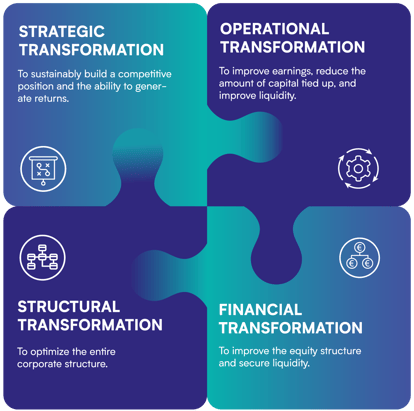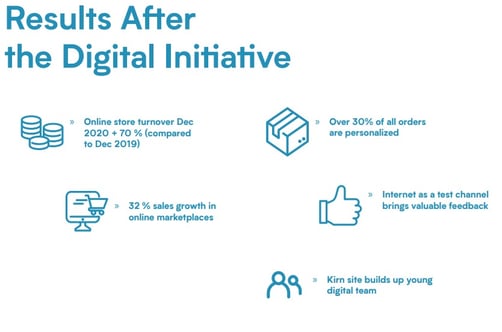Do you find your ecommerce business in crisis mode? It might be some comfort here to realize that you’re not alone. In fact, it has become the new reality for many businesses.
According to Gartner, some of the actions executive leaders took during the early days of the pandemic have contributed to supply and service challenges that their organizations now face as demand recovers.
To survive the crisis phase and begin the growth phase in a stronger position, businesses should focus on efficiency improvements and cost savings. A crucial component of this is digitization, which has the potential to automate a company's entire value chain, making it more efficient and transparent.
Together with FOSTEC & Company, we recently produced a whitepaper on how businesses can build resilience in times of uncertainty. It includes a framework that will help businesses begin their digital transformation journey.
Download the whitepaper.
Increasing crisis resilience through classical transformation
Existential crises for enterprises tend to occur gradually, starting with a management crisis and then leading to issues with strategy, turnover, earnings, and liquidity. To overcome these challenges, transformative actions are necessary - and the earlier they’re taken, the greater the chance of success.
The classical transformation process aims to ensure the company's short-term survival and regain a competitive edge in the market over the medium to long term.
The fields of action are divided as:

Operational excellence as the basis for growth
Digital transformation optimizes the value chain by improving efficiency and driving new growth. Efforts to increase efficiency will generate immediate benefits, freeing up liquidity and resources for growth initiatives.
There are five phases to achieving digital operational excellence:
- Digital health check – It provides information about the company's digital maturity level and offers initial quick wins for implementation from the initial analysis.
- Workflow analysis - All value-added value creation processes are considered and optimization measures are presented with a focus on automation and process optimization.
- Measures & simulations - Optimization within individual workflows is worked out. The focus is on automation options and process optimization using tools.
- Business case - The total savings potential and the investments required for the transformation project are summarized. The necessary investments and recurring costs incurred through the implementation of automation and process optimization measures are recorded in detail.
- Implementation – This involved determining an appropriate project management tool, defining a communication plan, and determining individual work packages.
Additional growth effects through digitization
Once the value chain has been analyzed for digital operational excellence and optimization has been initiated, growth can be amplified through digitization. This can be done with a platform business model, the creation of an e-commerce distribution plan, and the establishment of a digital sales center.
One option is to modify or supplement the current business model with a platform-based model. Platform business models provide a digital marketplace where services, products, or data can be offered. They function as intermediaries, connecting a diverse range of buyers and sellers, who can perform transactions on the platform using self-service processes.
The advantages of platforms include network effects, high levels of digitization, and economies of scale. Traditional business models have limitations, as profitability decreases as the model grows to a certain point, resulting in downsizing.
In contrast, platform business models have nearly unlimited potential for scaling without sacrificing profitability.
>> Read our ultimate guide to Digital Operations Platforms <<
Case study: Braun Büffel increases sales 70% during Corona crisis
Braun Büffel, a German manufacturer of leather handbags, purses, and accessories, uses traditional craftsmanship to create its quality products, which it then markets globally through both analog and digital channels.
In the fall of 2019, Braun Büffel initiated a project to revitalize its digital sales channels. During the Covid summer of 2020, the company saw a surge in its e-commerce, particularly in the D2C segment, thanks to the implementation of the Actindo Core1 Digital Operations Platform. The platform has brought clarity and efficiency to the company's diverse digital sales channels.

To read more about how Braun Büffel was able to achieve this, download our case study.